Why is "VERY" so popular with moms?
This series explores hints for achieving the SDGs and realizing a sustainable society. Our guest this time is Asako Imao, Editor-in-Chief of the fashion and lifestyle magazine "VERY".
VERY has gained significant support by delivering diverse information through its magazine and website to housewives with a keen interest in fashion, beauty, interior design, cooking, education, and more.
How does "VERY" engage with its housewife audience and develop its features and series? Ms. Imao's insights should be highly valuable for companies seeking to communicate their products, services, and philosophies to consumers within the context of SDGs and sustainability.
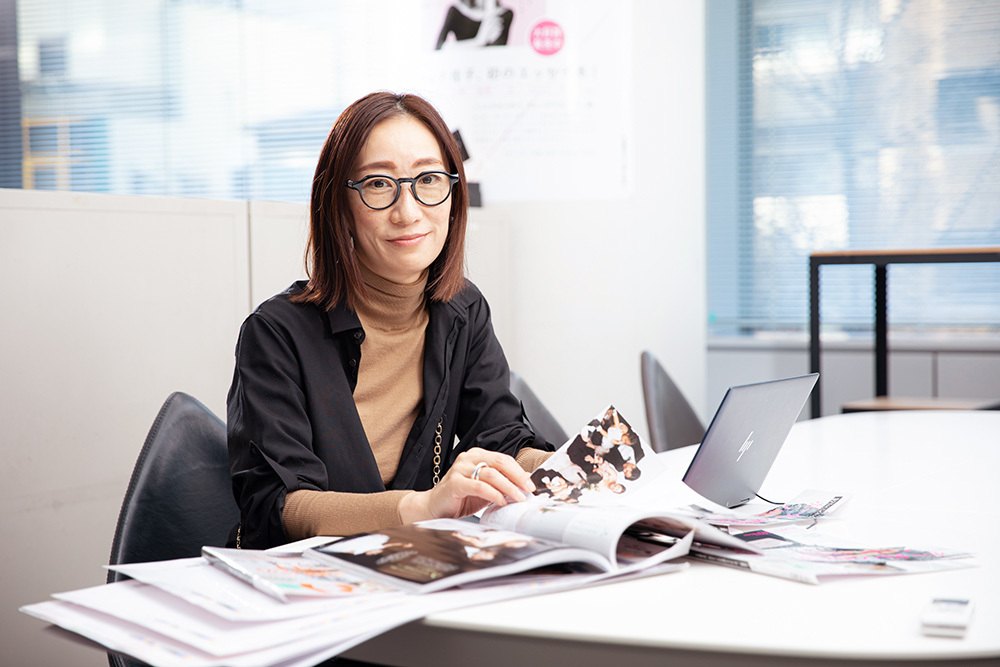
VERY
A fashion & lifestyle magazine supporting women who, despite being busy with work and childcare, want to cherish both their families and themselves while enjoying every day. It delivers diverse information—covering fashion, beauty, interiors, cooking, education, and more—to mothers with a keen interest in these areas, via print, web, and social media.

There's a disconnect between what companies think and what moms think
──When companies communicate their products, services, and corporate stance to consumers, I believe it's crucial to accurately grasp consumers' thoughts and behaviors. "VERY" has launched numerous features designed to attract its main readership of homemakers. How do these features come about?
Imao: Every month, the editorial staff of "VERY," myself included, meet directly with readers and other moms to hear about their current interests, concerns, and various other topics. Meeting readers to understand their thoughts is a long-standing tradition at Kobunsha, not limited to the "VERY" editorial department.
Moms' attitudes and purchasing behaviors change with the times. Major disasters or incidents naturally cause immediate shifts. Since moms' perspectives are constantly evolving, we strive to keep up as much as possible. From these reader interviews, the "VERY" editorial team generates nearly 200 feature ideas each month. This dedicated, time-consuming effort to engage with moms is the foundation of "VERY" feature planning.
──VERY also features projects related to sustainability and carbon neutrality.
Imao: Our stance isn't simply to cover SDGs, sustainability, or carbon neutrality because they're trending topics. In fact, the term "SDGs" doesn't appear that often in the pages of "VERY" to begin with.
Even before the term "sustainable" became widespread, when interviewing readers, we often heard: "The moment I became a mom, I started thinking about my child's future, and various social issues became visible." Hearing these voices, since I became editor-in-chief in 2007, we've consistently launched various projects about "environmental issues" and "comfortable living" – always focused on thinking about children's futures together with our readers.
The more we learned, the more I sensed moms' interests steadily shifting toward the future and sustainability. Responding to this growing interest, we launched a front-page serial in 2020 titled "Sustainamama Knows: Today's Trendy FASHION Has Love!"
──What kind of series is it?
Imao: We coined the term "Sustainamama" for "moms who care about environmental issues, take action, yet still enjoy fashion without overdoing it." For these moms, we introduced sustainable fashion items made using recycled materials or designed to reduce environmental impact.
As terms like SDGs and sustainability gained recognition, the fashion industry's challenges—mass production and mass disposal—became more apparent. Fashion is sometimes seen as an enemy of the SDGs. However, many fashion brands, designers, and companies, both domestic and international, are actively working to solve these issues. We wanted to share these efforts in "VERY" too.
Post-pandemic, there's a growing tendency among moms to value items more, with a heightened desire to invest in things that last. Therefore, we've revamped the series to "Sustainable Moms and the Wonderful Relationship with 'Bespoke'." We've updated it to a feature centered on custom-made items, introducing products that inspire deeper affection.
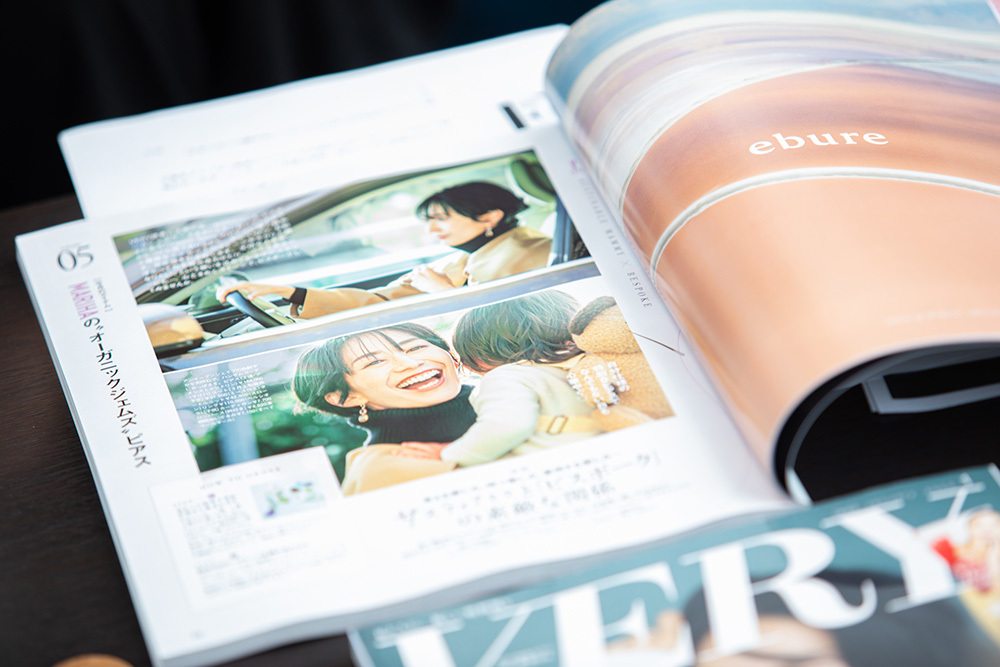
──So even for sustainable projects, it's truly mom-first, meaning the ideas originate from what moms are interested in?
Imao: Yes, that's right. While we collaborate with various companies on tie-ups and product development, I feel we're most useful when we sense a disconnect between corporate perspectives and moms' realities.
For example, regarding home appliances, companies might immediately assume moms are interested in appliances for housework or beauty, like washing machines or hair dryers. However, with the increase in remote work, printers are actually in high demand among moms right now. When talking with moms, they ask things like, "Which brand is good?" I think there are still many ways and options for promoting home appliances to the mom demographic.
──That's surprising.
Imao: When it comes to appliances, women are often stereotyped as being technologically inept or not paying attention to features. But that's not actually the case. Women scrutinize features carefully too. Some say, "Even if it has lots of features, many are unnecessary. In that case, a lower price is better." Moms often hold the decision-making power when shopping for the household. I think if companies collaborated with "VERY," they could create communication that really resonates with moms...
Responding to moms' desire to learn and keep up with their children
──VERY ran features on carbon neutrality in 2021 and 2022. Is carbon neutrality also a high priority for moms?
Imao: Moms want a livable planet for their children's future, but they feel they rarely get opportunities to learn about or think about environmental issues in their daily lives. Meanwhile, today's children learn about SDGs and environmental issues at school. Many moms feel their children know more and they're falling behind. "VERY" readers are inherently intellectually curious, with many showing a strong desire to learn. So, we launched a section on the "VERY" website called "VERY×Carbon Neutral Action!" and implemented a project with Toyota Motor Corporation within it.
──What kind of project was it?
Imao: In 2021, we held a "Carbon Neutral Online Course" and a "Carbon Neutral Certification Test." The online course was held twice on Zoom. The first session featured motor journalist Goro Okazaki, who taught us about choosing a car and environmental issues. For the second session, we welcomed Yuka Negishi from the California-based apparel brand Ron Harman, who spoke about the company's sustainable initiatives.
We made it easy and fun for readers to participate by using familiar topics like cars and fashion for the VERY generation and inviting VERY models to speak and learn together.
We also created an online "Carbon Neutrality Test" to test what they learned, and issued a "certificate of completion" to those who answered 40 or more of the 50 questions correctly. Incidentally, this test is so difficult that even we, the creators, had trouble passing it (laughs).
The goal of this project was for moms themselves to deepen their understanding of carbon neutrality and become able to articulate their own thoughts in their own words. We received feedback from participants like, "It was great to be able to show my children, who study hard, that I'm learning too."
──What kind of project did you implement in 2022?
Imao: We proposed creating an advent calendar where parents and children plan one carbon-neutral action per day. The "VERY" editorial team also came up with several carbon-neutral action examples and published them on our website. Furthermore, we held a contest where participants sent us images of their advent calendars and achievement sheets detailing the actions they completed.
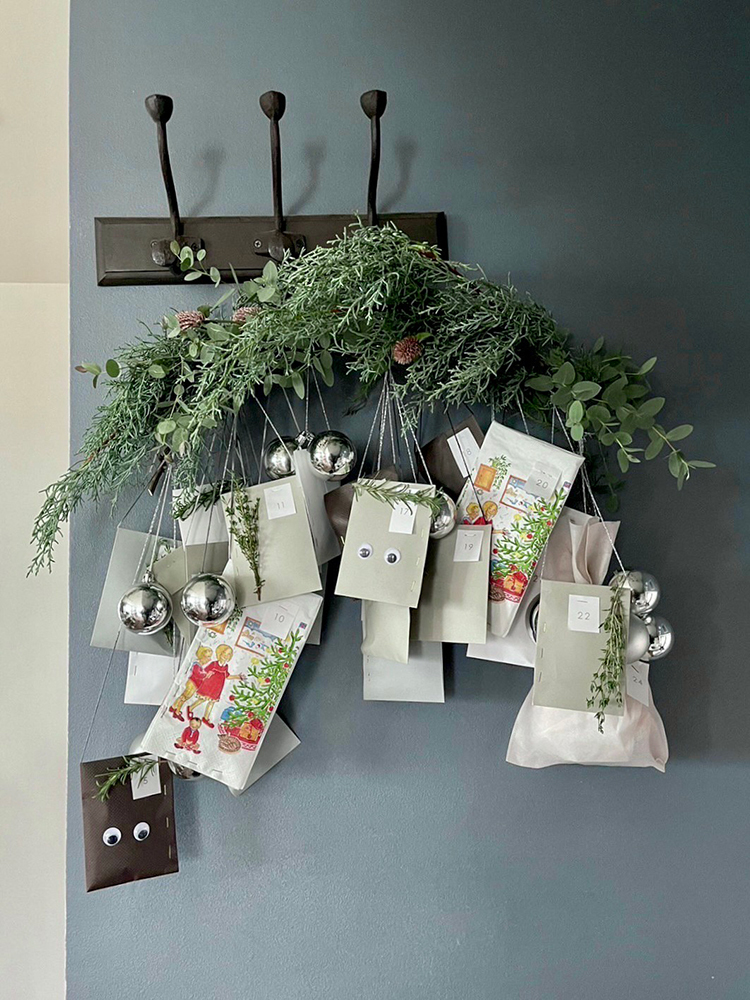
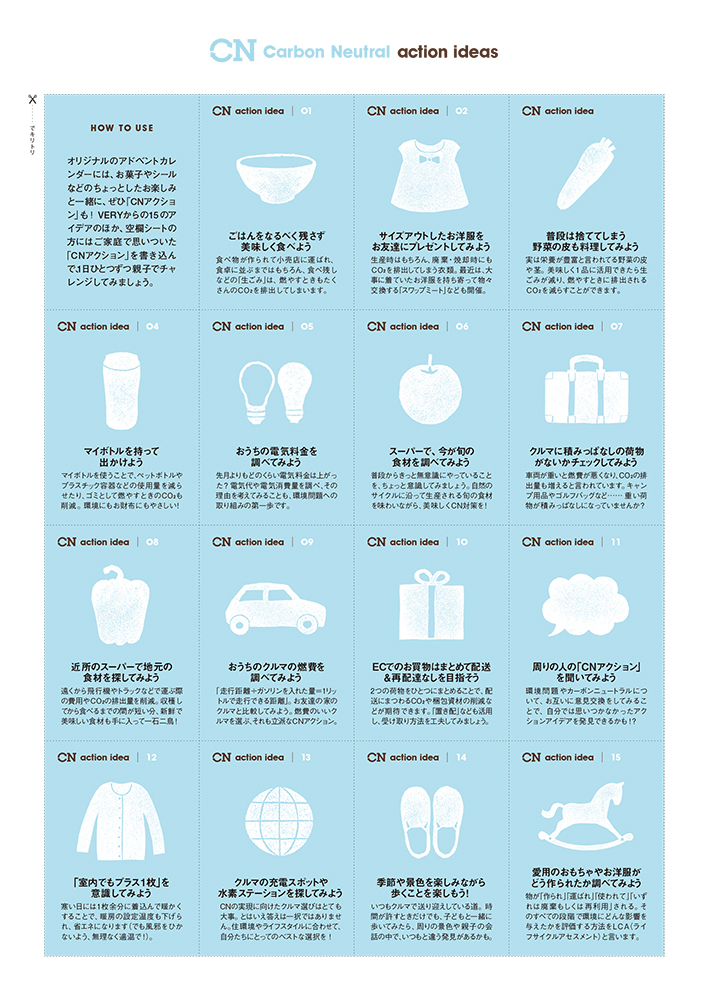
──How was the reader response?
Imao: It was well-received, with comments like, "My child, who loves crafts, enjoyed working on it," and "We got together with friends, made it together, and exchanged ideas." Thinking about how to communicate in ways that spark interest in carbon neutrality, make participation easy, and encourage fun action-taking was a great learning experience for us too. We want to expand these efforts going forward.
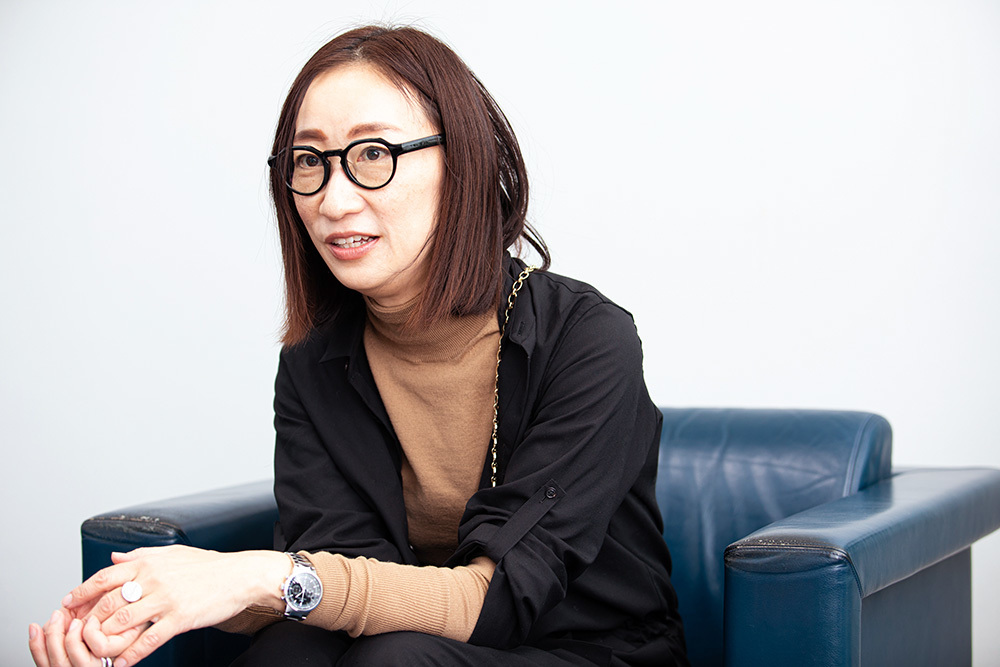
VERY Children's Center's Efforts to Leave No One Behind
──Besides carbon neutrality, what other initiatives do you run with companies?
Imao: Among our readers, mothers who gave birth during the pandemic faced particularly difficult circumstances. Many became pregnant before fully understanding COVID-19, then had to spend childbirth alone in hospitals without partners or family support. Even after their babies were born, restrictions on going out and anxiety made it hard to connect with other moms. Many tearfully shared worries like whether their children's development was okay while wearing masks constantly.
Considering what "VERY" could do for these mothers, who are already at risk for postpartum depression, we launched "VERY Childcare Center" in December 2020. It provides a monthly Zoom gathering where mothers can connect and relax. We invite VERY models, experts, and midwives to each session, opening it up for any questions.
──This initiative aligns with the SDGs' goal of leaving no one behind. How did you secure corporate partnerships?
Imao: From the very beginning, our goal was to find sponsors early on and monetize the initiative. As a result, we secured Kao Corporation for six months, followed by Toyota Motor Corporation, and then Stokke. This project continues today.
We want to collaborate with companies while understanding our readers' thoughts and needs.
──Listening to you, it feels like companies are drawn to and gather around your passion for staying close to readers and solving their problems.
Imao: That's right. Ultimately, it's a business, so monetization is essential. We have a strong conviction that these initiatives are absolutely necessary for our readers. We present this clearly and find companies who share that belief.
The fact that "VERY" is launching various sustainable initiatives is becoming well-known among companies and advertising agencies. Recently, we've seen an increase in companies approaching us, expressing interest in running sustainable-themed projects in "VERY" specifically targeting our mom readers.
Our role is to translate the unique features of products and services created with conviction by companies into messaging that resonates with our readers. To do this, we constantly put ourselves in the readers' shoes, suggesting things like, "How about presenting this product this way?" to align with their current sensibilities. We can do this because we've consistently engaged with our readers.
Furthermore, when introducing products through tie-ups, companies sometimes prioritize quantitative data like follower counts. However, we carefully consider casting based on who can best convey the product's merits to our readers.
If the goal is simply to raise product awareness, having someone with a large social media following promote it can be effective. However, companies usually want more than that—they want readers to actually pick up the product or take action. Therefore, for example, when introducing a bicycle, we consider: "Let's have a model review it who has personally experienced the importance of bicycle safety because they struggled with cycling and even fell off, or a model who says bicycles are indispensable for their daily commute." We think about who can convey the appeal to readers with the most persuasive power.
VERY features models who share their daily lifestyles and perspectives within the magazine, and they have fans who understand this. That's precisely why recommendations models genuinely endorse resonate strongly with readers and create impactful content. We see this as a key strength.
We will continue to face readers' feelings head-on and implement reader-focused initiatives.
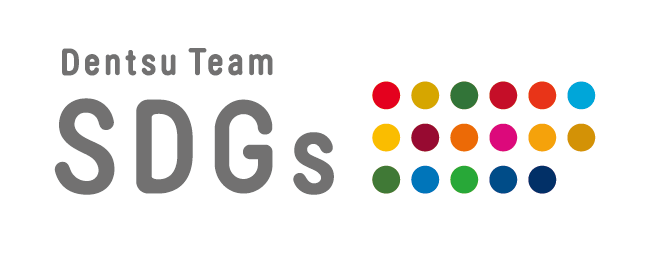
TeamSDGs collaborates with various SDGs stakeholders to disseminate information about the SDGs and plan/develop solutions.
※Please also see Asako Imao's article here:
Thinking "Sustainable" Together with Moms ~ "VERY" Editor-in-Chief Asako Imao
Was this article helpful?
Newsletter registration is here
We select and publish important news every day
For inquiries about this article
Back Numbers
Author

Asako Imao
Kobunsha
After working as a freelance writer, she joined Kobunsha in 1998. She became editor-in-chief of "VERY" in 2007, the first woman to hold the position of editor-in-chief of a women's fashion magazine at the company. After taking maternity and childcare leave, she continues her work as editor-in-chief while raising her children.


